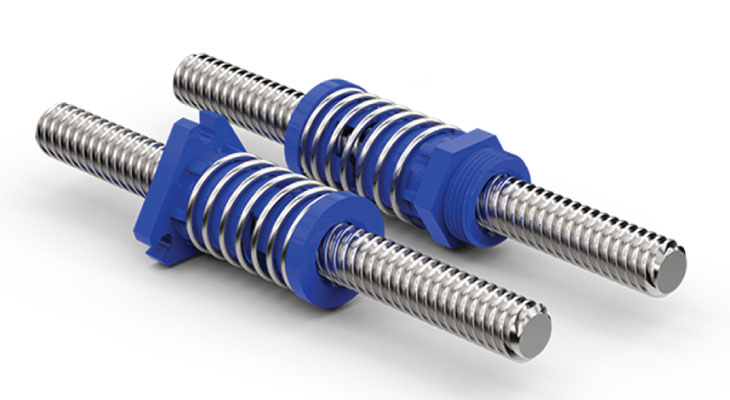How to Choose an Anti-Backlash Lead Screw Nut

Lead screws are the norm for today's linear motion applications. However, despite the lead screw's advantages over competing technologies (i.e., affordability, precision, the ability to design with freedom and reduced maintenance), all lead screw systems inherently have a certain amount of "play." Therefore, an important design consideration when utilizing a lead screw is the amount of backlash your system can tolerate while still achieving the project goal.
How do I choose the proper anti-backlash lead screw nut for my application?
Backlash can be detrimental to your application by causing wear and inaccurate positioning. Syringe pumps and robotic applications are two examples of lead screw systems where positioning and accuracy are essential. Thankfully, compensating for backlash is relatively simple, and Helix Linear Technologies offers a variety of anti-backlash lead screw nuts to ensure your application performs as expected.
There are multiple styles of anti-backlash lead screw nuts, but two of the most common are Axial Anti-backlash nuts (AAB) and Radical Anti-backlash (RAB) nuts. Like lead screws themselves, the type of anti-backlash nut that is selected depends on the intended application.
3 Steps to Selecting the Correct Anti-Backlash Lead Screw Nut
Step 1 - Determine the level of repeatability and precision required in your application.
Step 2 - Calculate the intended load of your application. Each anti-backlash
lead screw/nut assembly has specific load requirements for the lead screw to function correctly.
Use our Helix Linear Technologies Lead Screw Calculators HERE.
Step 3 - Assess the amount of drive torque necessary in your application.
Axial Anti-Backlash Nuts (AAB)
Axial anti-backlash nuts consist of a main nut body and a secondary ring that share the same thread form. There is a spring between the two components that force each part against opposing flanks of the screw thread. This biasing takes up the clearance between all the components, i.e., gets rid of the backlash. The drawback to this design is that if the load is greater than the spring force, you can still get backlash in the system. For a more significant load, you need a stronger spring to keep backlash to a minimum. However, a more robust spring means more friction between the nut and screw, requiring more drive torque to overcome.
Radial Anti-Backlash Nuts (RAB)
Radial anti-backlash nuts consist of a nut body with flexible "fingers." There is an axial spring that pushes a ring along the nut body. There are ramp features on the ends of the fingers that the ring uses to push the fingers inward towards the screw. The threads on the fingers are pushed into the valleys of the screw thread to take up any clearance. There is a mechanical advantage provided by the ramp features between the fingers and the collar, which amplify the force of the spring. The radial anti-backlash nut can handle loads more significantly than the spring force, unlike the axial anti-backlash nut design. There is also less of an increase in required drive torque compared to an axial anti-backlash nut.
Both nut styles serve the same function of preventing backlash while maintaining high efficiency. They are available from Helix Linear in standard and metric thread forms with flanged, threaded, or threaded with a screw-on flange nut body.
To view additional anti-backlash nut options from Helix Liner Technologies, CLICK HERE.
If you are unsure which style of anti-backlash nut is suitable for your application, contact one of our sales engineers for assistance. We would be glad to put our expertise to work for you to help determine the best anti-backlash solution for your application.
We hope that you've found this information about controlling backlash useful. To assist you in selecting an appropriate lead screw assembly for your next project, we have also assembled some expert tips in our Engineer's Guide to Lead Screw selection.
If you found the information in this blog helpful, you may be interested in our Lead Screw Guide! Download your Lead Screw Guide by clicking below!



